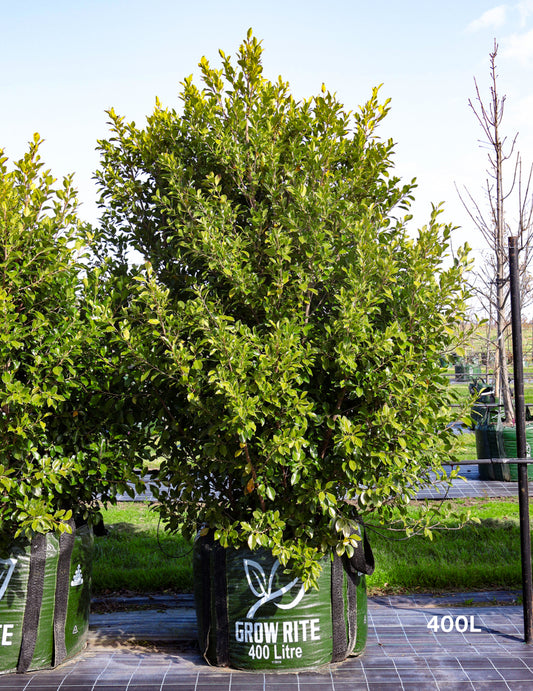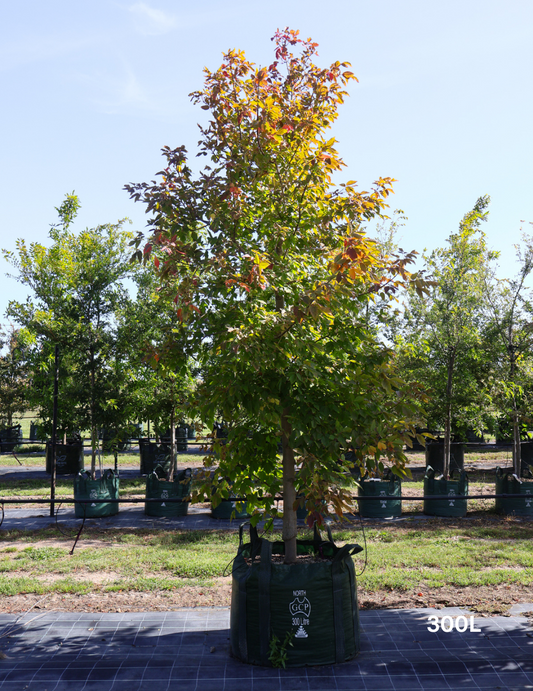Mediterranean gardens offer a timeless charm with warm, sun-drenched appeal and minimalistic yet vibrant plant selections. Whether you're looking to evoke southern Italy's tranquil landscapes or the Greek isles' coastal elegance, choosing the right trees is essential. For wealthy property owners who seek refinement, low maintenance, and year-round beauty, Olea europaea (Olive Tree), Laurus nobilis 'Miles Choice', and Cupressus sempervirens (Italian Cypress) are standout options.
Each of these trees brings unique characteristics to the Mediterranean garden. They thrive in hot, dry climates while exuding elegance and a sense of timelessness. In this article, we’ll explore why these trees are perfect for your Mediterranean-inspired garden and provide key facts to guide your selection.
Olea europaea (Olive Tree)
Few trees capture the essence of the Mediterranean, such as the Olea europaea or Olive Tree. Known for its silvery-green leaves and twisted, gnarled trunk, the Olive Tree symbolizes peace, wisdom, and longevity. Beyond its cultural significance, the Olive Tree is prized for its drought resistance and ability to thrive in poor soils. This evergreen tree offers year-round greenery, providing a stunning visual focal point in any garden. Its dense foliage can also be a natural privacy screen, creating a secluded and serene space.
Key Facts:
- Mature Height: 4-10 meters
- Mature Width: 4-8 meters
- Best Uses: Feature tree, privacy screen, ornamental
- Leaf Appearance: Silvery-green, narrow leaves with a subtle sheen
- Rate of Growth: Moderate
- Tolerates: Drought, poor soil, high salinity
Why It's Perfect for Your Mediterranean Garden:
The Olea Europaea brings both beauty and function to Mediterranean gardens. Its silvery leaves create a stunning contrast against stone walls and terracotta tiles, while its slow-growing nature requires minimal upkeep. Whether used as a central feature in a gravel garden or planted in rows along a pathway, the Olive Tree evokes a sense of age-old elegance. Additionally, its ability to thrive in hot, dry climates makes it the ideal choice for properties where water conservation is a priority. It’s a tree that effortlessly elevates any landscape with its subtle, timeless beauty.
Laurus nobilis 'Miles Choice' (Bay Laurel)
A refined and versatile addition to any Mediterranean garden, Laurus nobilis 'Miles Choice' is a cultivar of the traditional Bay Laurel. Known for its dense, dark-green foliage, this evergreen tree is an excellent choice for topiary, hedging, or as a standalone feature. Its aromatic leaves, often used in cooking, add aesthetic and practical value to a garden. Laurus nobilis thrives in sunny, sheltered locations and is well-suited to Mediterranean climates, where it can flourish even in poor, sandy soils.
Key Facts:
- Mature Height: 2-5 meters
- Mature Width: 2-4 meters
- Best Uses: Hedging, topiary, feature tree
- Leaf Appearance: Glossy, dark green, elliptical
- Rate of Growth: Slow to moderate
- Tolerates: Drought, mild frost, poor soil
Why It's Perfect for Your Mediterranean Garden:
The Laurus nobilis 'Miles Choice' epitomizes subtle luxury for those wanting a structured yet vibrant garden. Its compact growth habit makes it ideal for creating formal hedges or sculpted topiaries, adding a touch of sophistication to outdoor spaces. The rich green leaves provide visual appeal and fill the air with a faint, aromatic fragrance, enhancing the sensory experience of your garden. This tree is perfect for those who value beauty and utility, offering year-round greenery while requiring little more than occasional trimming to maintain its shape.
Cupressus sempervirens (Italian Cypress)
Cupressus sempervirens, or the Italian Cypress, is the quintessential tree for any Mediterranean garden. Its tall, narrow form and stately appearance have made it a staple in European landscapes for centuries. Often seen flanking grand estates or lining long driveways, the Italian Cypress adds vertical structure and a touch of formality to any outdoor space. This evergreen tree is drought-tolerant and requires minimal maintenance, making it a favorite among those who appreciate refined, low-maintenance design elements.
Key Facts:
- Mature Height: 10-20 meters
- Mature Width: 1-2 meters
- Best Uses: Feature tree, accent tree, lining pathways or driveways
- Leaf Appearance: Dark green, scale-like foliage
- Rate of Growth: Moderate to fast
- Tolerates: Drought, heat, poor soil
Why It's Perfect for Your Mediterranean Garden:
The Cupressus sempervirens adds a sense of grandeur to Mediterranean landscapes, offering a striking contrast to the more rounded forms of Olive Trees and Bay Laurels. Its tall, columnar shape is ideal for framing views, accentuating architectural features, or lining pathways. Despite its impressive height, the Italian Cypress has very little ground space, making it a smart choice for narrow garden beds or smaller properties. Moreover, its evergreen nature ensures it remains a visual asset year-round, even in the most humid summers. The Italian Cypress is an unbeatable choice for those who desire a sophisticated, low-maintenance tree with a striking appearance.
Mediterranean Garden Design Tips:
1. Mix Heights and Forms:
Incorporate trees of varying heights and forms to create depth and interest in your garden. Use the tall, narrow shape of Cupressus sempervirens to contrast with the broader, more sprawling form of Olea europaea.
2. Create a Focal Point:
Feature trees like the Olive Tree can be a central focal point in your garden, drawing the eye and anchoring your design. Place them near seating areas or water features to enhance their presence.
3. Use Trees for Screening:
Privacy is often a priority in high-end gardens. Consider planting Laurus nobilis 'Miles Choice' as a hedge to create secluded spaces within your garden. This will allow you to enjoy your outdoor areas without intrusion while adding visual appeal.
4. Water-Wise Planting:
Mediterranean trees are known for their drought tolerance. By selecting species such as the Italian Cypress and Olive Tree, you can reduce water usage and maintain a lush, vibrant garden even in dry conditions.
FAQs
Q: How fast do Mediterranean trees grow?
A: Growth rates vary depending on the tree species. Olea europaea grows moderately, while Cupressus sempervirens can grow faster, particularly when young. Laurus nobilis 'Miles Choice' has a slower growth rate but provides dense foliage over time.
Q: Do Mediterranean trees require a lot of water?
A: No. Mediterranean trees, such as Olive Trees and Italian Cypresses, are drought-tolerant and require minimal watering once established. They are perfect for gardens where water conservation is a priority.
Q: Can these trees handle cold winters?
A: These trees are best suited to milder, Mediterranean-like climates. However, Laurus nobilis and Olive Trees can tolerate occasional light frosts, while Cupressus sempervirens is more cold-tolerant.
Q: How do I maintain the shape of these trees?
A: Laurus nobilis 'Miles Choice' is ideal for topiary and hedging, requiring regular trimming to maintain its shape. Cupressus sempervirens typically retain their narrow form with minimal pruning, while Olea europaea benefits from occasional light pruning to remove dead wood.
Conclusion
Selecting the right trees for your Mediterranean garden is an art that blends beauty with function. Whether you desire the timeless elegance of Olea europaea, the fragrant utility of Laurus nobilis 'Miles Choice', or the stately grandeur of Cupressus sempervirens, each tree brings unique value to your outdoor space. These trees thrive in Mediterranean climates, offering low-maintenance, water-wise solutions that enhance the luxury and appeal of your garden year-round.

















